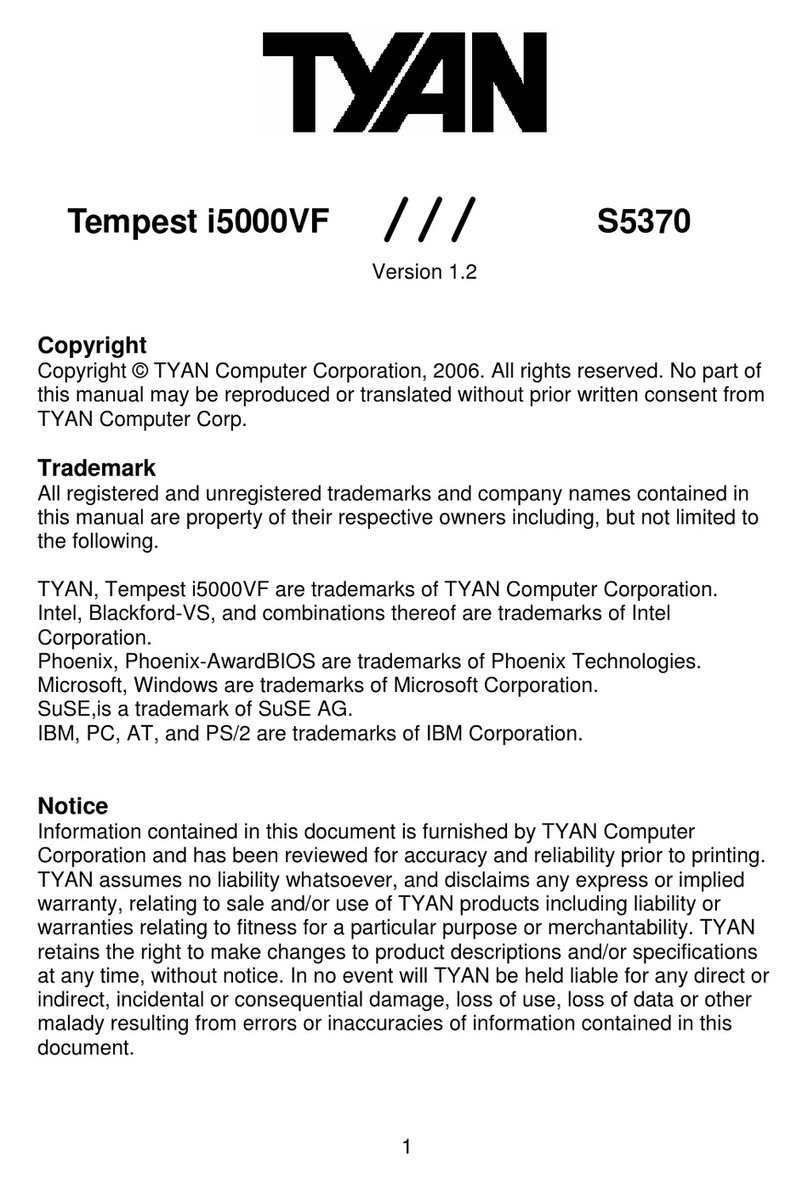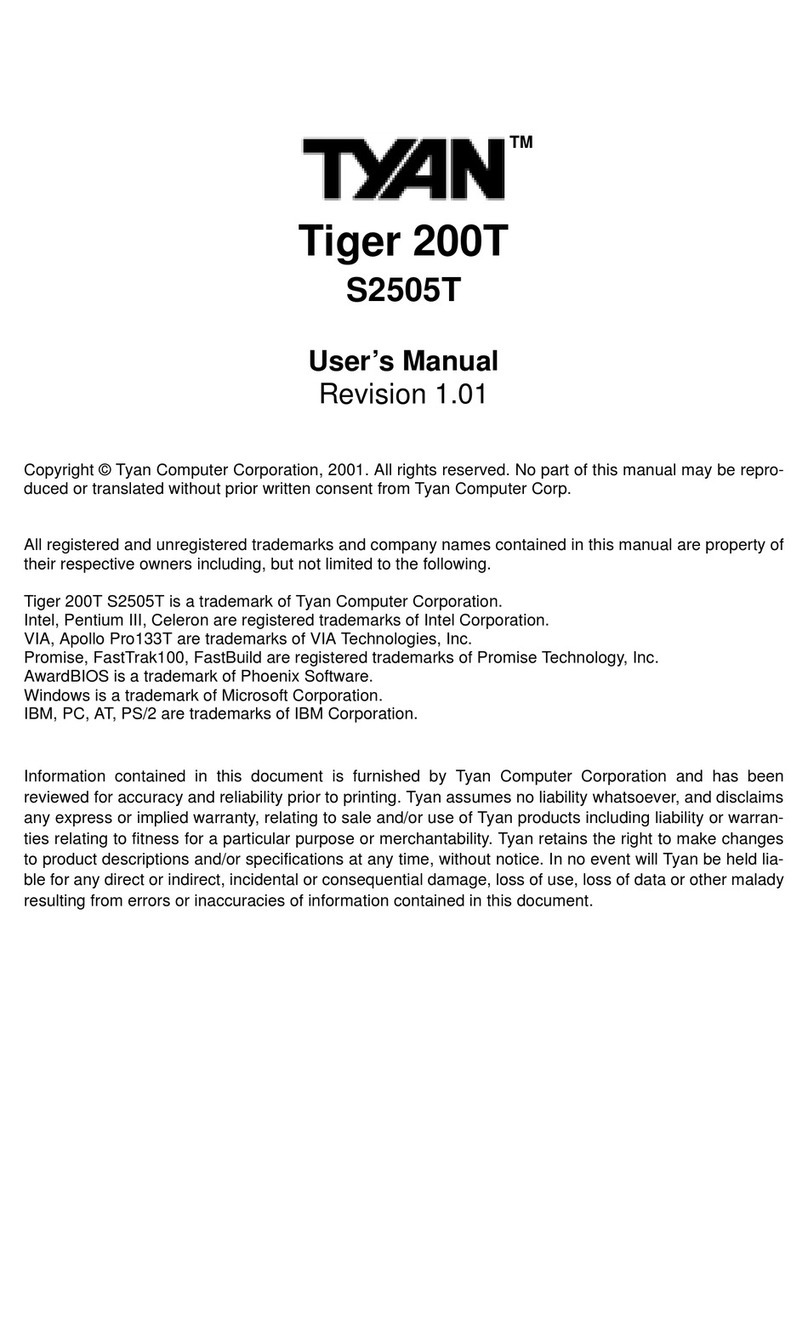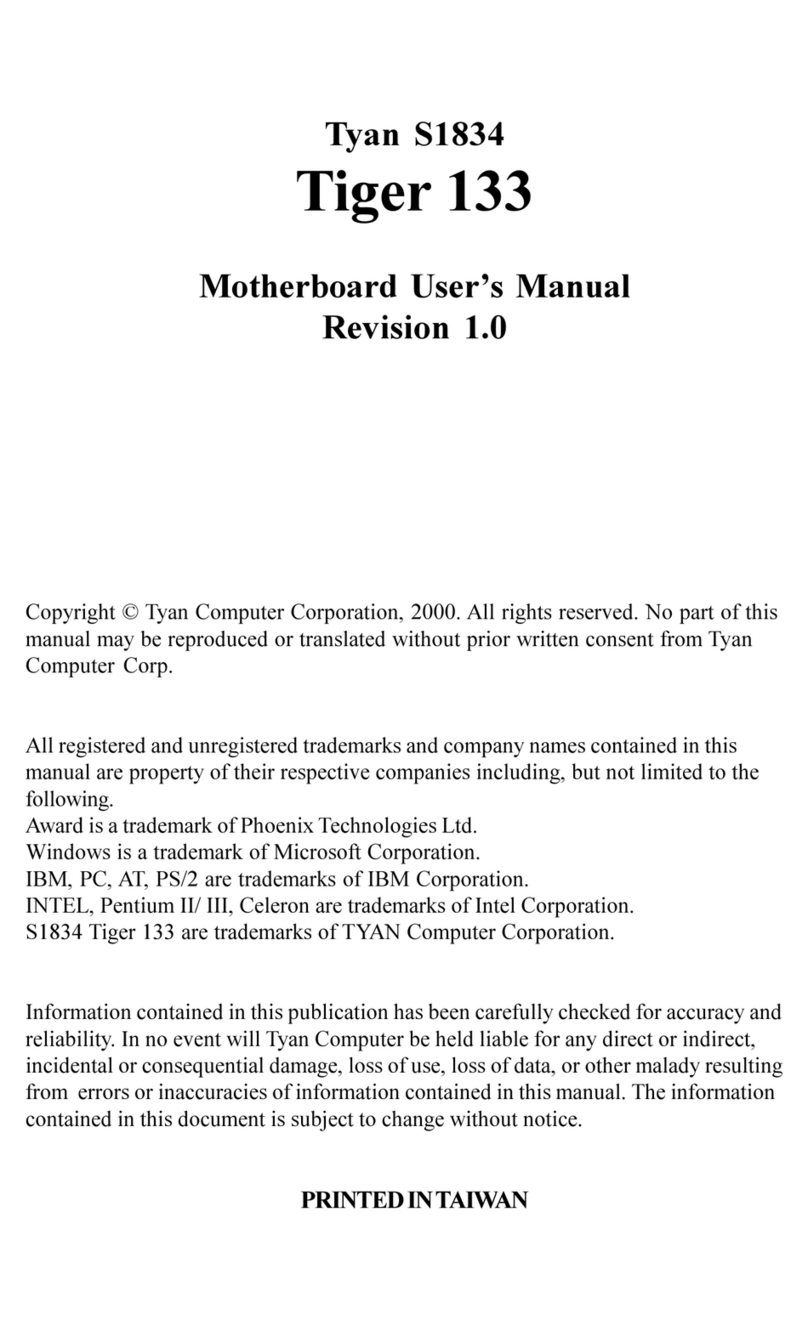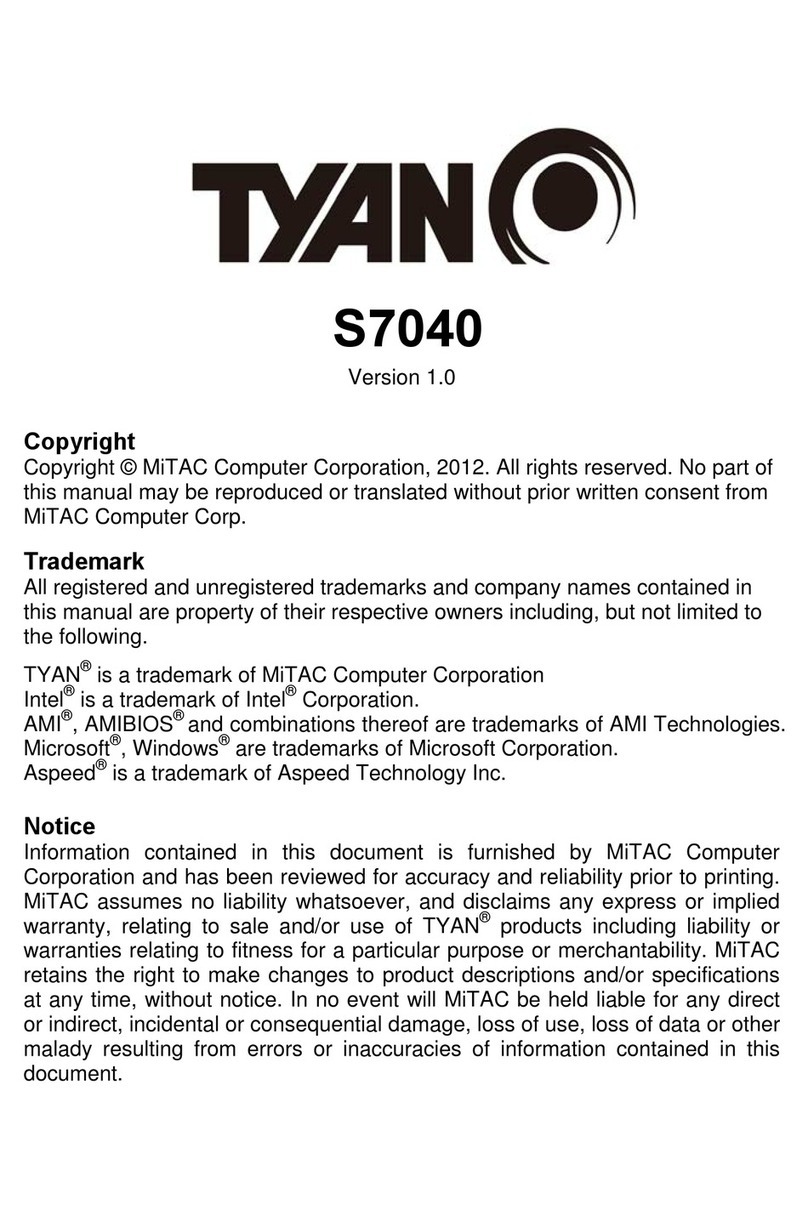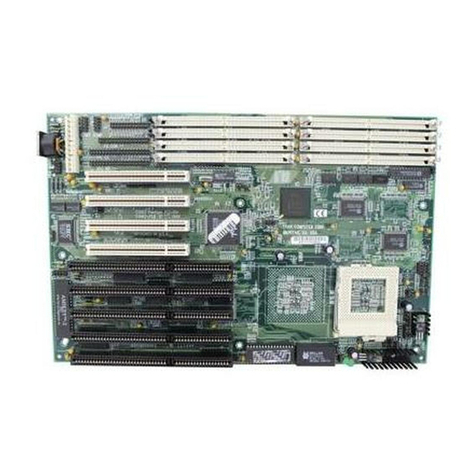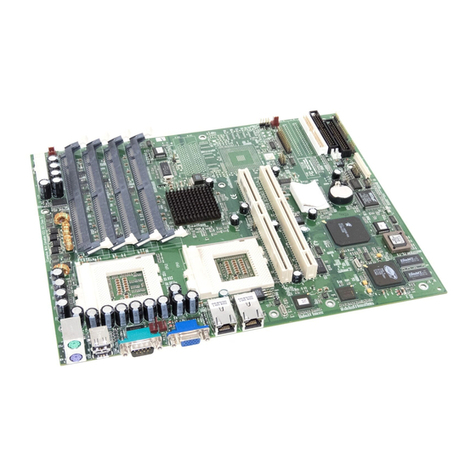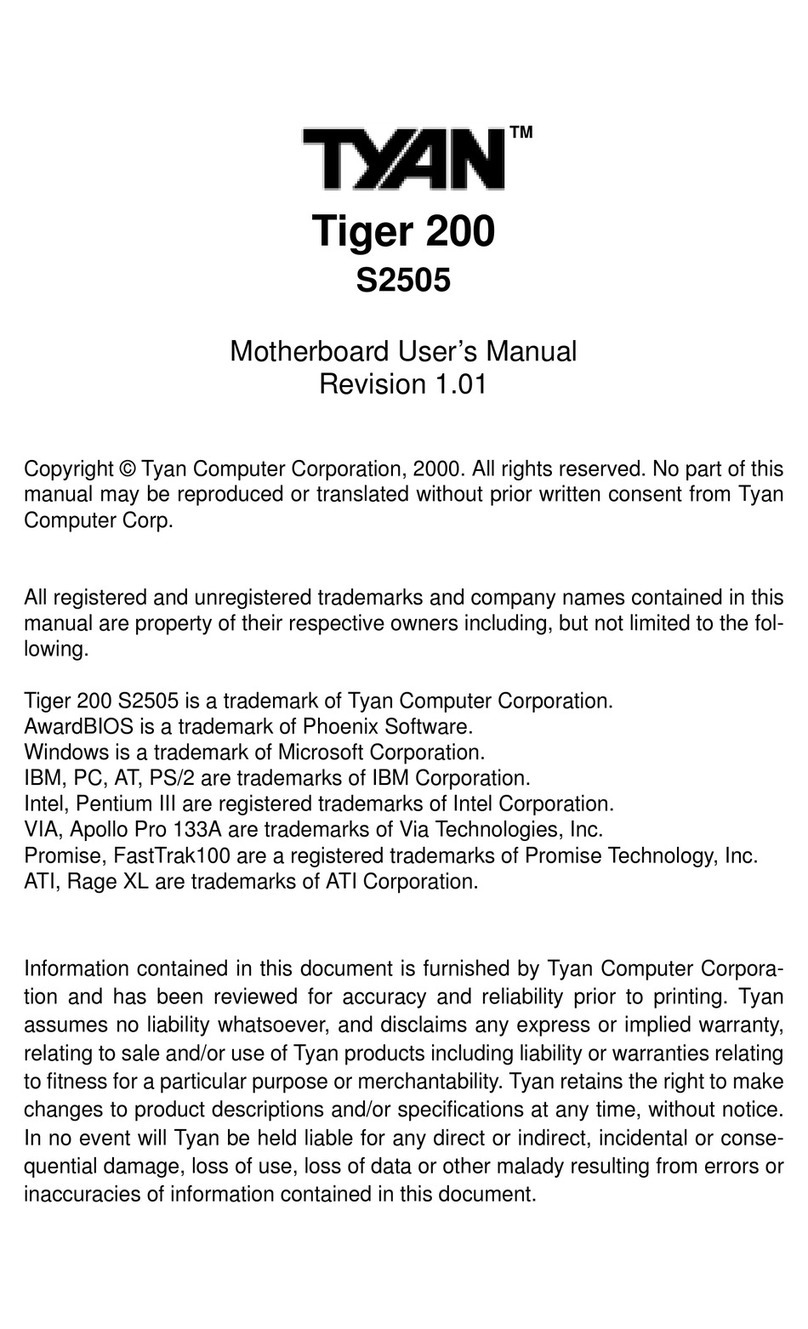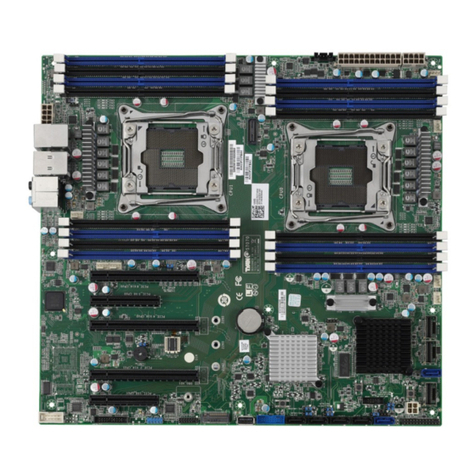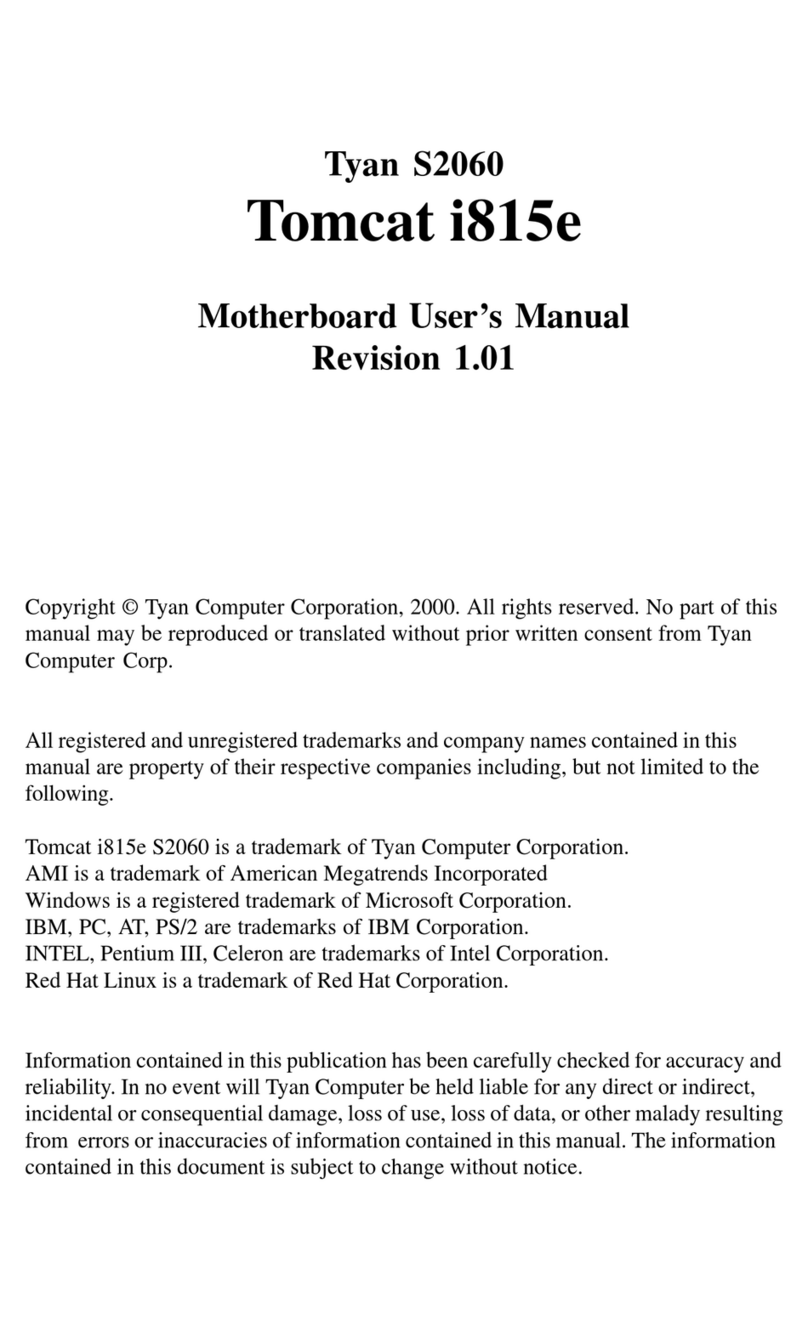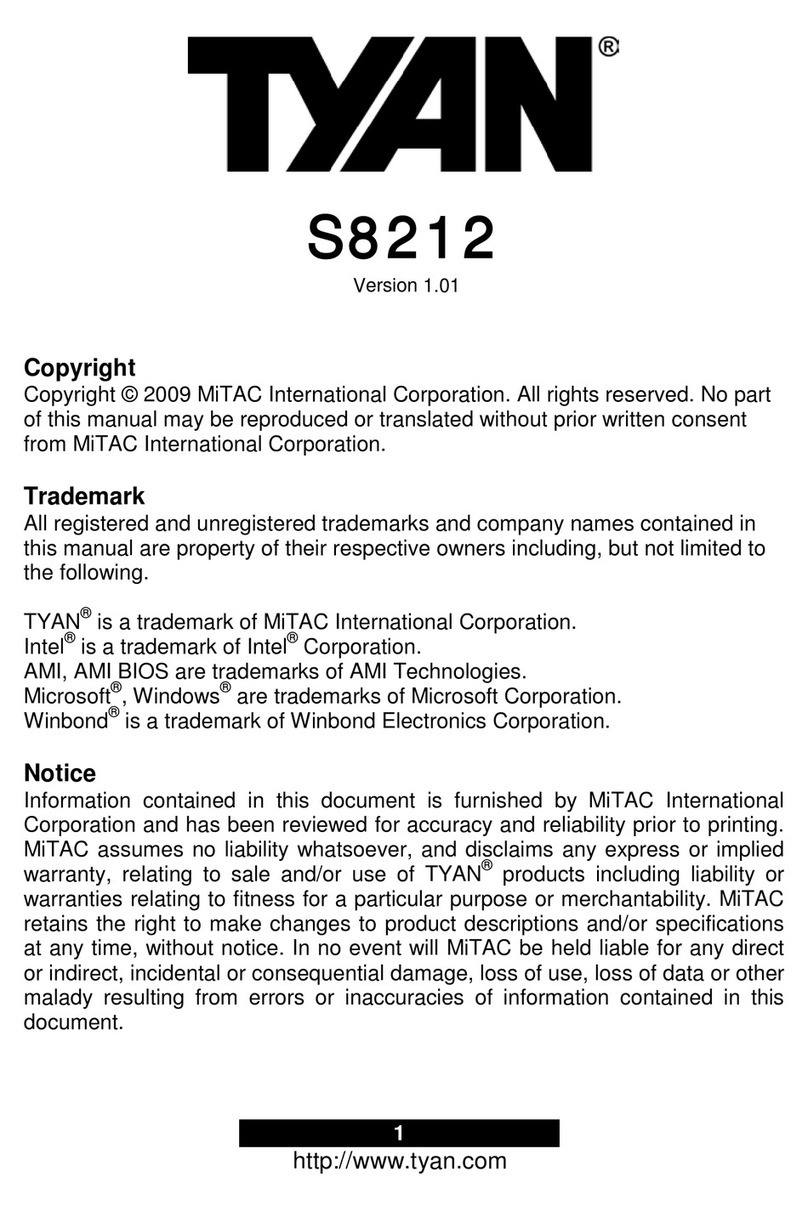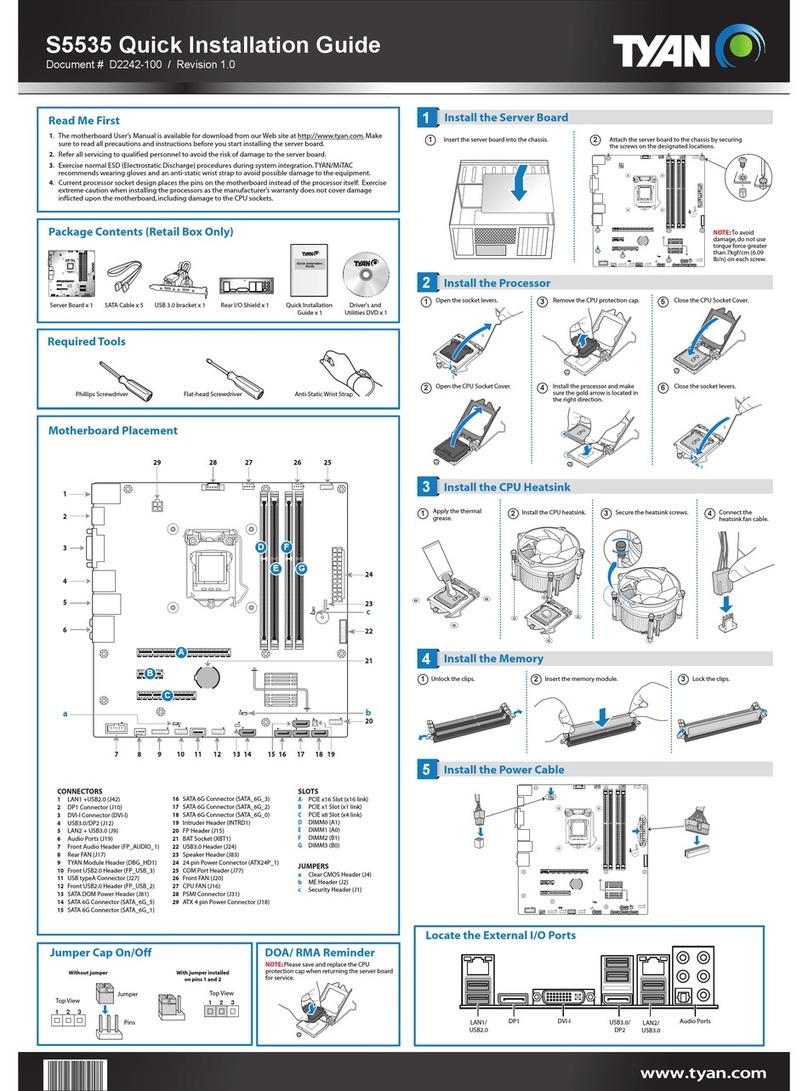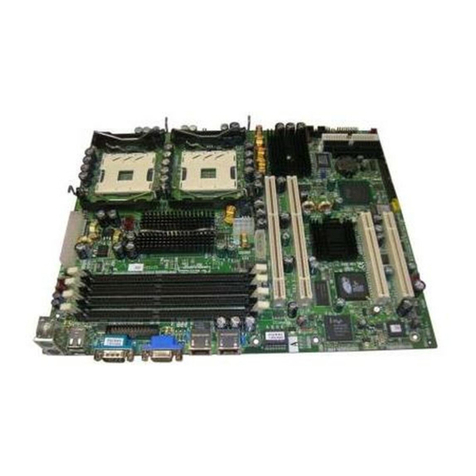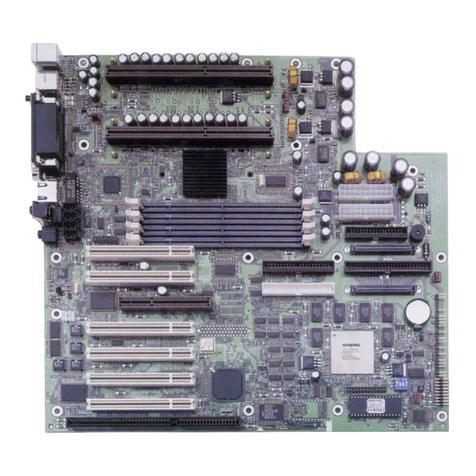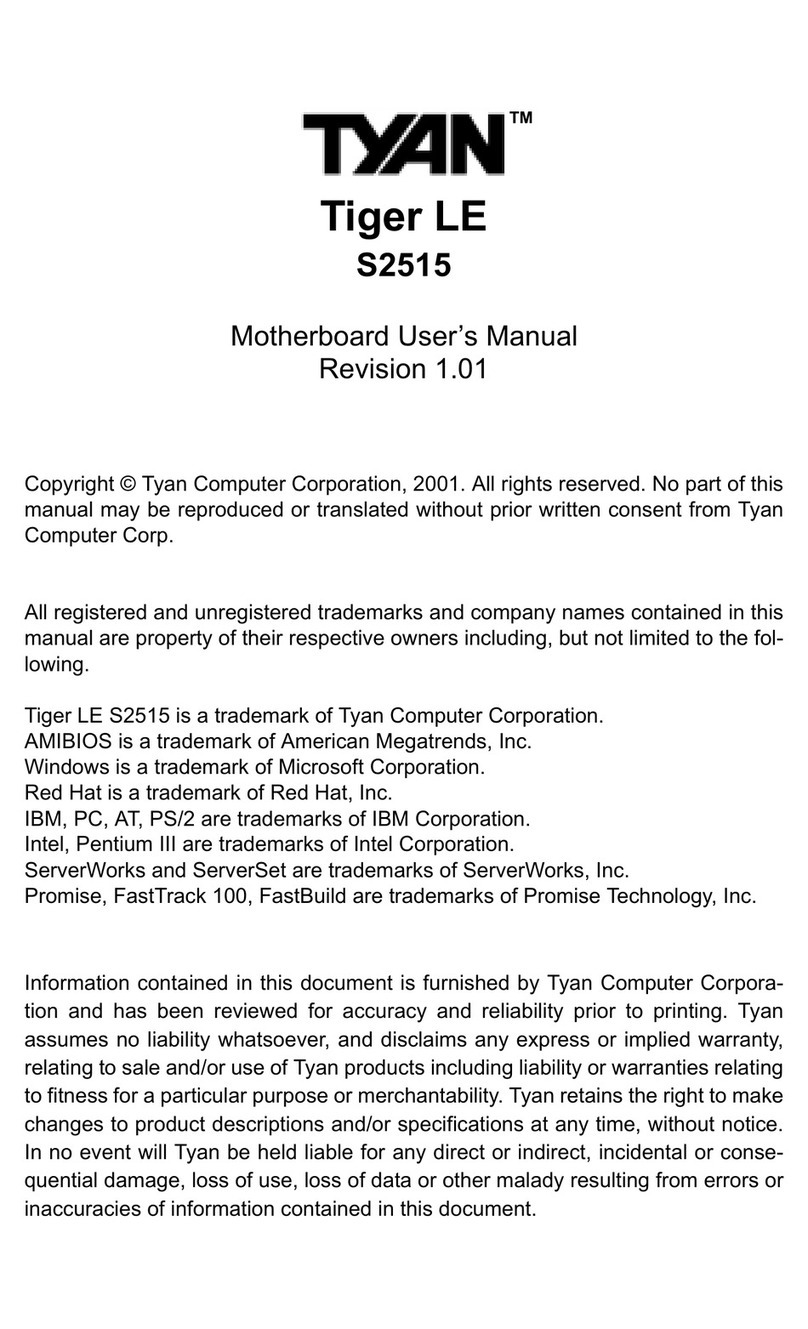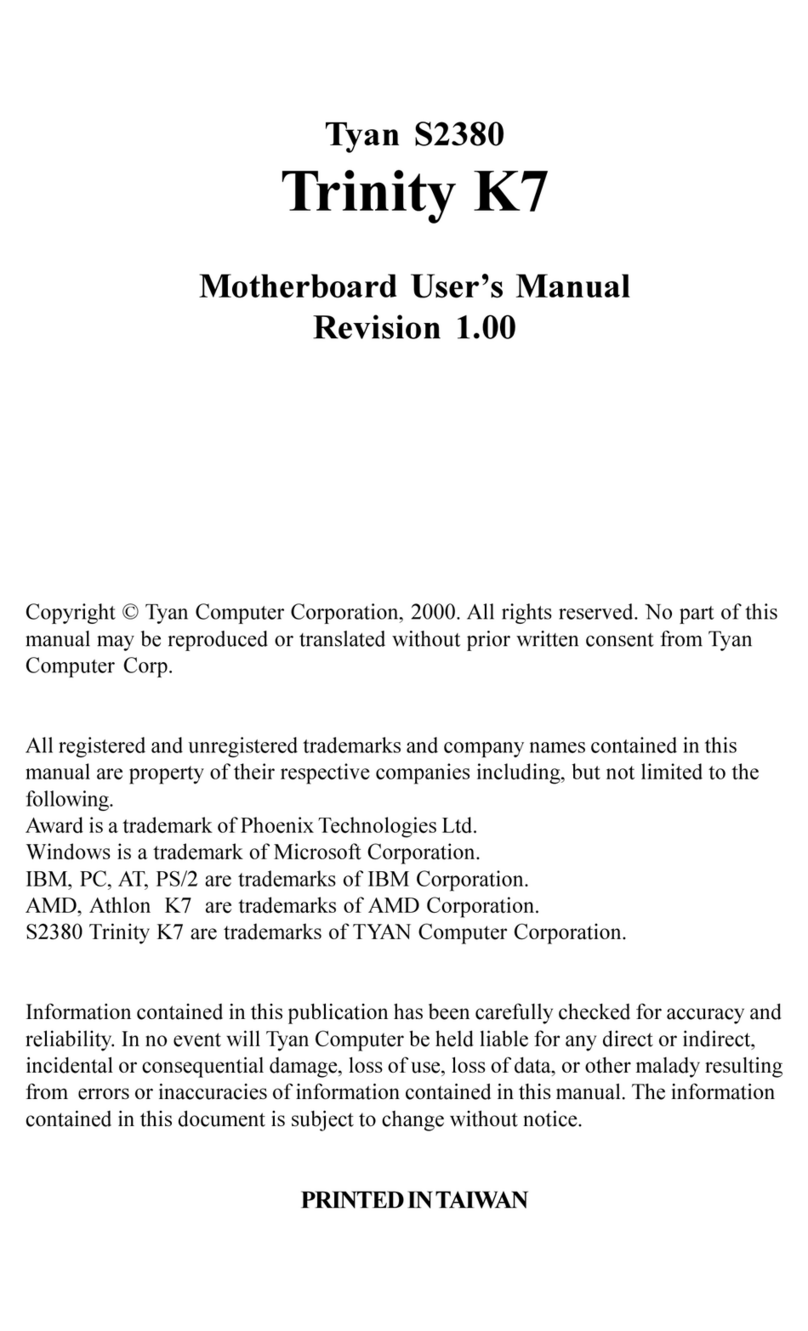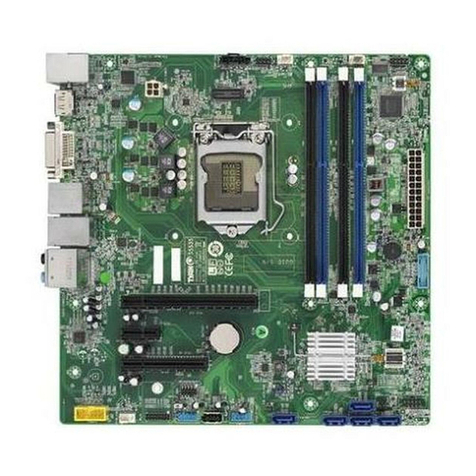
TableOfContents
1.Introduction.......................................................................1
1.1 Preface.................................................................. 1
1.2 Key Features..........................................................1
1.3HardwareSpecifications..........................................2
1.4SoftwareSpecifications.......................................... 2
1.5Environment........................................................... 3
2.Board Installation.............................................................. 4
2.1 Unpacking.............................................................. 4
2.2 Installation.............................................................. 5
3.S1461/6OnBoardResourceSetting................................ 6
3.1S1466BoardLayout&JumperLocationRev03....... 6
3.2QuickReferenceforJumpers(S1466)Rev03........... 7
3.3S1466BoardLayout&JumperLocationRev02....... 9
3.4QuickReferenceforJumpers(S1466)Rev02........... 10
3.5S1461BoardLayout&JumperLocation.................. 12
3.6QuickReferenceforJumpers(S1461)...................... 13
3.7S1463BoardLayout&JumperLocation.................. 15
3.8QuickReferenceforJumpers(S1463).......................16
3.9DRAMInstallation..................................................18
3.10CPUInstallation....................................................19
3.11UnderstandingTheDifferentClockSpeeds............. 20
3.12UpgradingCacheMemory..................................... 21
3.13 CMOS RTC..........................................................22
3.14SpeakerConnectorInstallation............................... 22
3.15TurboSwitch.........................................................22
3.16TurboLEDConnectorInstallation.......................... 23
3.17HardwareResetSwitchConnectorInstallation........23
3.18FlashEPROMJumpers......................................... 23
3.19HardwarePassword& CMOS Reset.....................23
3.20PeripheralDeviceInstallation.................................24
3.21Turbo/Non-Turbohotkeys...................................... 24
3.22ConnectingThePower Supply...............................25
4.BIOSConfiguration...........................................................27
4.1EnteringSetup....................................................... 27
4.2 Control Keys......................................................... 28
4.3 Getting Help........................................................... 29
4.4 The Main Menu...................................................... 29
4.5StandardCMOSSetupMenu...................................31
4.6BIOSFeatures Setup.............................................. 34
4.7ChipsetFeatures Setup............................................37
4.7.1PowerManagementSetup........................39
4.8PCISlotConfiguration.............................................41
4.9LoadSetup Defaults................................................43
i
